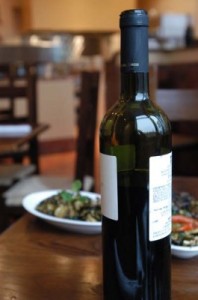By Ralph Barat Saltsman and Stephen Warren Solomon
Listen to Willie Nelson sing Smoke! Smoke! Smoke! That Cigarette (by Merle Travis and Tex Williams). Might Willie next try Vape! Vape! Vape! That E-cig?
While the new nicotine debate rages between health advocates and the suddenly visible E-cigarette industry, state and local legislators are adopting restrictions on E-cigs and prohibitions governing where E-cigs can be used. Governments are scrambling to keep E-cigs out of the hands of children under the age of 18.
Do we allow it? Do we ban it? Do we regulate it like Colorado regulates marijuana? After spending four decades educating the public on the effects of tobacco, do we allow smoking to be replaced by vaping?
Several municipalities, including Los Angeles, are contemplating adopting moratorium ordinances to disallow establishment of new E-cig stores pending comprehensive regulatory schemes. Some cities have their own temporary moratoriums already in place. From California to the Eastern seaboard, these local governments are adopting moratoriums in order to halt the free flowing proliferation of E-cig outlets while those cities figure out how to regulate the expanding industry. Perhaps “exploding” applies since there are reported cases of E-cigs literally exploding.
Since the FDA has not yet regulated E-cigarettes and since congressional legislation has not been enacted, municipalities are left to their own devices. State governments are wrestling with E-cig regulations as well with varying success. For example, in Oregon, two competing recent bills died in committee. One bill was designed to include E-cigs in Oregon’s Clean Air Act, the other bill was intended to only eliminate sales of E-cigs to minors. The bills apparently cancelled each other.
Reuters reports on February 20, 2014 the FDA, pursuant to a 2009 authorization law, is drafting a proposed rule which, after written, will be subject to a period of public comment. The process could take a year.
The problem with how to handle an industry that is heading for lift-off while many municipalities are trying to determine just what the product is and what effects it has is not just limited to big cities on both coasts. The Sleepy Eye Herald-Dispatch reported on February 12, 2014 that the Sleepy Eye (Minnesota) City Council tabled its Clean Air ordinance discussed at the February 11th Council meeting. Before the Council, the American Lung Association warned the product was poison, and the City Manager stated there are those who think the product is safe.
When the forerunner to today’s E-cigarette was first patented in the early 60’s, NFL Quarterbacks, movie stars and television “doctors” were endorsing their favorite brands of cigarettes. Despite early anti-smoking rumblings, smoking had no real stigma and little restriction as compared with the whirlwind of warnings and prohibitions awaiting the industry. It wasn’t until January 1964 that the Surgeon General released the study outlining the epidemic danger of cigarette smoking. The E-cigarette was not marketed, unnoticed and there was no need for regulation.
Fast forward to 2014. Following further engineering and additional patents for sophisticated mechanics leading to the development of what is today recognized as the E-cig paired with a new 21st Century market demand for nicotine delivery without cigarettes, Governments started to sit up and take notice. Suddenly here are E-cig advertising and E-cigarette stores. Surely legislation had to follow.
E-cigs operate as electronic systems that vaporize liquid nicotine which is inhaled by the consumer. Nicotine is the centerpiece; there is no tobacco. The mechanics consist of three main components: battery, chamber and cartridge. There is a rechargeable lithium battery: a chamber where the nicotine is injected then vaporized and a cartridge filled with liquid containing nicotine (and flavor). An atomizer vaporizes the liquid in the chamber. The process is initiated by the consumer inhaling, but there can be a manual option as well for those who wish to vaporize their nicotine by the push of a button. Manual vaporization can produce more nicotine vapor.
The call to include E-cigarettes in the tobacco regulatory schemes is being heard in local city halls and in Sacramento and other state capitals. For example Ordinance 182823 amending Los Angeles City Municipal Code Article 6.9 and 7 was passed by the City Council December 4, 2013 to be effective January 22, 2014. The tobacco product permitting and administrative processing law was amended to include E-cigarettes in the sweep of tobacco product regulation. Article 6.9, Section 46.90(c) provides, in relevant part:
“Tobacco Product” shall also include any product or formulation of matter containing nicotine derived from tobacco, or synthetic nicotine that is manufactured, sold, offered for sale, or otherwise distributed with the expectation that the product or matter will be introduced into the human body.”
Presently, a panel for the Los Angeles City Council is drafting recommendations relative to comprehensive E-cig regulations. States, counties and cities across the United States are including E-cigarettes in their tobacco use restrictions as to means of sale, age of buyer, locations where use is prohibited and required sellers’ license or permit.
A number of states and local governments have simply folded E-cigarettes into general tobacco restrictions such as the mid-December 2013 action taken by New York City whose City Council voted to extend its public smoking law to the public use of E-cigarettes. New York now prohibits E-cigarette smoking where smoking was traditionally prohibited such as in restaurants, bars and office buildings. (New York Times December 19, 2013)
Effective September 2010, California Health and Safety Code §119405 states that it is unlawful “for a person to sell or otherwise furnish an electronic cigarette, as defined in subdivision (b), to a person under 18 years of age.” The statute defines E-cigarette as “a device that can provide an inhalable dose of nicotine by delivering a vaporized solution.”
Now that states and local governments are beginning to treat E-cigs the same as tobacco products, this begs the question: are E-cigarettes as harmful to the user and the nearby public as tobacco products?
E-cigs are marketed and reviewed by appearance and use including color, battery, style, physical comparison to tobacco cigarettes, length, vapor volume, and flavors. Among other flavors, e-cigs can deliver cherry, pina colada, coffee, vanilla or chocolate. Critics wonder how those flavors aren’t considered as targeting to minors. Advertisements have touted ubiquitous safe use such as on airplanes, because, they say, there is no second-hand smoke. Advertisers point out other tobacco hazards don’t exist with e-cigs because there is no smoke, therefore no smoke smell, no tar, no ash and no teeth stain. By the way, prices for “starter kits” range from under $25 to over $175.
Recognizing what may be a long term trend, Market Watch in the Wall Street Journal noted traditional cigarettes are experiencing a decline in demand while E-cigarette sales are on a significant rise. Wall Street Journal reports Lorillard enjoyed a 38% ($54 million) increase in E-cig sales compared with a 1.4% ($1.69 billion) increase for old fashioned tobacco cigarettes. (Wall Street Journal 2.12.14)
With no definitive guidance from the FDA governments are left scrambling for answers. It is noteworthy that in 2010, the U.S. Court of Appeals, District of Columbia Circuit, upheld an injunction disallowing the FDA from regulating E-cigarettes under the drug/device provisions of the Federal Food, Drug and Cosmetic Act in Sottera, Inc. v. Food & Drug Administration, 627 F3d 891, 899 (2010). The Court concluded:
“As we have already noted, the FDA has authority to regulate customarily marketed tobacco products—including e-cigarettes—under the Tobacco Act. It has authority to regulate therapeutically marketed tobacco products under the FDCA’s drug/device provisions….. Of course, in the event that Congress prefers that the FDA regulate e-cigarettes under the FDCA’s drug/device provisions, it can always so decree.”
In its published report December 18, 2013, Consumer Reports concludes that E-cigarettes are “probably safer” for second hand contact compared to cigarette smoke, but there may still be some risk. Other health organizations warn of the toxicity of E-cigarettes and the danger directly to the consumer by vaping and inhaling the variety of toxins. Depending on to whom one speaks, e-cigs are either a great way to quit smoking (or smoke safer), or E-cigarettes are just a new way of ingesting poison and poisoning the person next to you. Meanwhile states, counties and cities are enacting restrictions and prohibitions. So while the jury of health professionals is still deliberating, legislatures are regulating.
Ralph B. Saltsman and Stephen Warren Solomon are partners in the Law Firm of Solomon, Saltsman & Jamieson in Los Angeles. The authors practice in the area of land use, Indian Gaming, zoning, administrative, personal injury, and constitutional law. Saltsman and Solomon can be reached at (310) 822-9848; [email protected] and [email protected].



